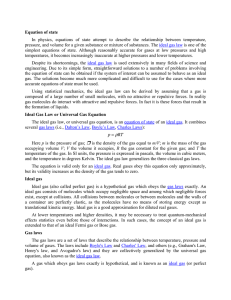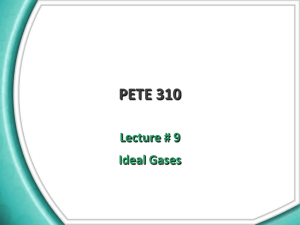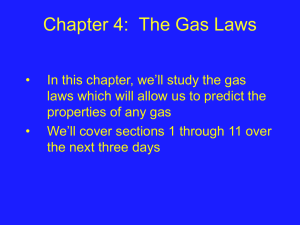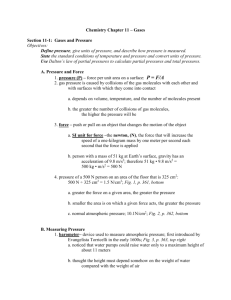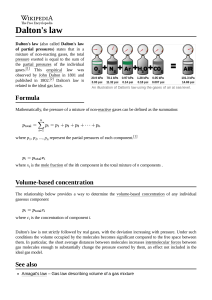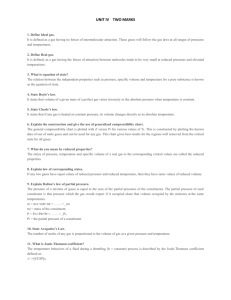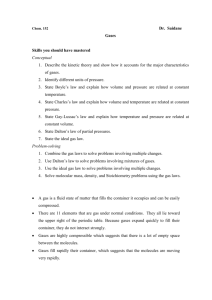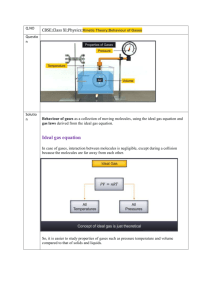Equation of state
advertisement
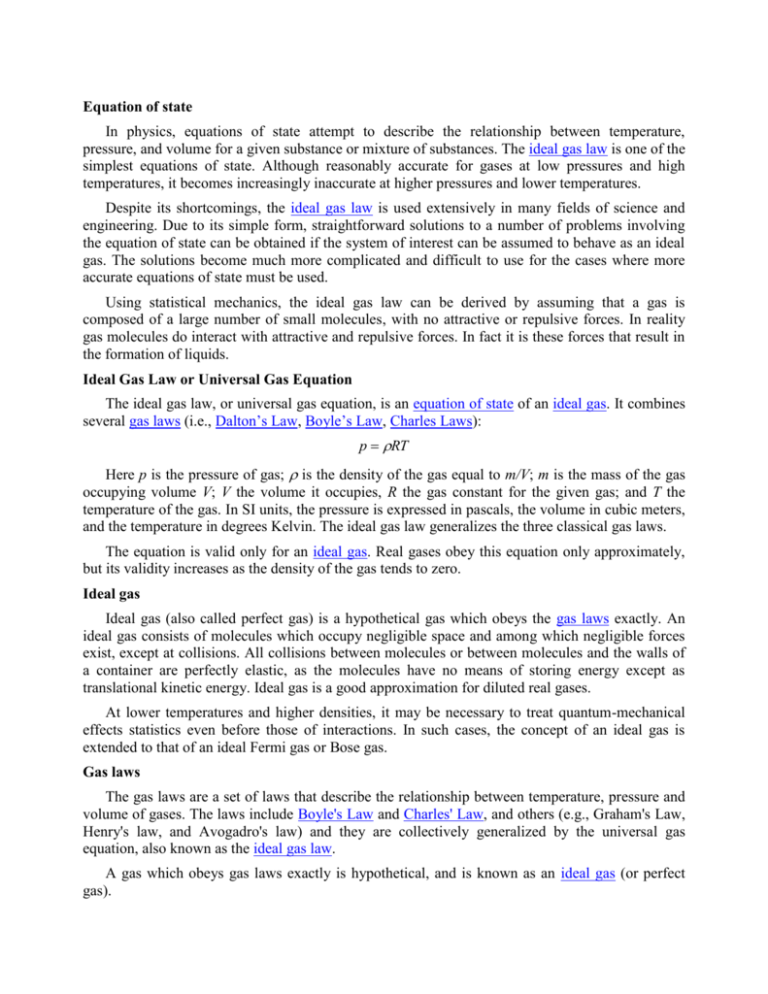
Equation of state In physics, equations of state attempt to describe the relationship between temperature, pressure, and volume for a given substance or mixture of substances. The ideal gas law is one of the simplest equations of state. Although reasonably accurate for gases at low pressures and high temperatures, it becomes increasingly inaccurate at higher pressures and lower temperatures. Despite its shortcomings, the ideal gas law is used extensively in many fields of science and engineering. Due to its simple form, straightforward solutions to a number of problems involving the equation of state can be obtained if the system of interest can be assumed to behave as an ideal gas. The solutions become much more complicated and difficult to use for the cases where more accurate equations of state must be used. Using statistical mechanics, the ideal gas law can be derived by assuming that a gas is composed of a large number of small molecules, with no attractive or repulsive forces. In reality gas molecules do interact with attractive and repulsive forces. In fact it is these forces that result in the formation of liquids. Ideal Gas Law or Universal Gas Equation The ideal gas law, or universal gas equation, is an equation of state of an ideal gas. It combines several gas laws (i.e., Dalton’s Law, Boyle’s Law, Charles Laws): p RT Here p is the pressure of gas; is the density of the gas equal to m/V; m is the mass of the gas occupying volume V; V the volume it occupies, R the gas constant for the given gas; and T the temperature of the gas. In SI units, the pressure is expressed in pascals, the volume in cubic meters, and the temperature in degrees Kelvin. The ideal gas law generalizes the three classical gas laws. The equation is valid only for an ideal gas. Real gases obey this equation only approximately, but its validity increases as the density of the gas tends to zero. Ideal gas Ideal gas (also called perfect gas) is a hypothetical gas which obeys the gas laws exactly. An ideal gas consists of molecules which occupy negligible space and among which negligible forces exist, except at collisions. All collisions between molecules or between molecules and the walls of a container are perfectly elastic, as the molecules have no means of storing energy except as translational kinetic energy. Ideal gas is a good approximation for diluted real gases. At lower temperatures and higher densities, it may be necessary to treat quantum-mechanical effects statistics even before those of interactions. In such cases, the concept of an ideal gas is extended to that of an ideal Fermi gas or Bose gas. Gas laws The gas laws are a set of laws that describe the relationship between temperature, pressure and volume of gases. The laws include Boyle's Law and Charles' Law, and others (e.g., Graham's Law, Henry's law, and Avogadro's law) and they are collectively generalized by the universal gas equation, also known as the ideal gas law. A gas which obeys gas laws exactly is hypothetical, and is known as an ideal gas (or perfect gas). Boyle's Law, named after Robert Boyle, states that the volume occupied by a gas at constant temperature is inversely proportional to the pressure applied: pV constant Charles Law states that the pressure that a gas exerts on the walls of its container is determined by the momentum of the atoms and molecules of the gas, which in turn is determined by the temperature. As the temperature increases the atoms and molecules move faster, and so exert a greater pressure on the walls. For a given mass of gas at constant volume, Charles Law states that the pressure exerted by it is directly proportional to its temperature: p / T constant Dalton's law In physics, Dalton's law (also called Dalton's law of partial pressure) is a law that states the total pressure exerted by a gaseous mixture is equal to the sum of the pressures that would be exerted by the gases if they alone were present and occupied the same volume. More precisely, the pressure p of a mixture of n gases can be defined as the summation: p pi i This means that each gas in a mixture acts as if the other gas is not present and that the pressures that come from each gas can simply be added. It is assumed that the gases do not react with each other.
